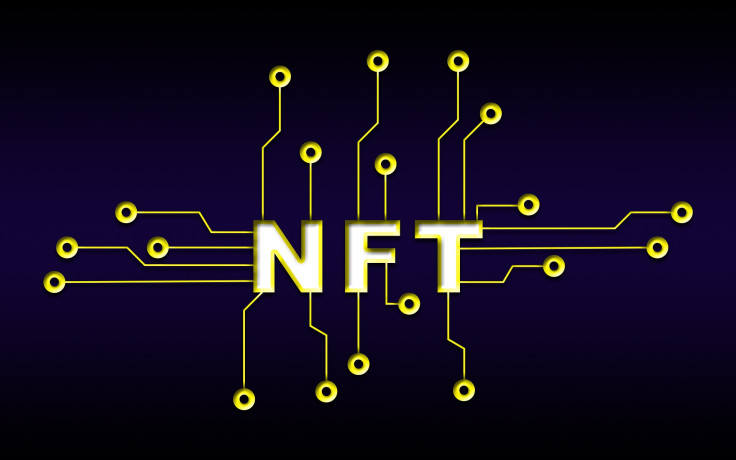Harbinger Of Web3 Era: Are NFTs Still A Good Investment?
From digital art to Web3 gaming, the NFT trend saw a full lifecycle before revitalizing with a range of new use cases. And the investment value of NFTs depends on the adoption of their uses.

NFTs have come a long way from breeding and trading virtual cats to becoming a popular art form for world-renowned artists and multi-million dollar items for prestigious auction houses. The use cases for NFTs expanded over time, including in-game Web3 assets, audiovisual collectibles, digital art and trading and investment instruments.
To understand whether NFTs are still holding up as good investments or not, it's crucial to understand what made them so desirable in the first place.
Short for "nonfungible tokens," NFTs enabled true ownership of digital objects, standing out with their unique characteristics that are missing in other decentralized tokens. While the majority of digital assets are interchangeable, NFTs are not. They function like collectible baseball cards; each has its unique characteristics that can't be replicated, making it significantly harder to replace an NFT once it changes hands.
The idea of "collecting" digital objects — combined with the 2020 crypto bull run — sparked off the initial rush and hype around NFTs, leading to the creation of the NFT market in a short period of time. Artists, musicians and creators of all kinds began to see NFTs as a way to monetize their digital content without any intermediaries. The interest expanded to mainstream following the auction of Beeple's "Everydays: The First 5,000 Days" NFT art in March 2021, which was sold for $69.3 million.
Web3 Ecosystem Grew on NFTs
The NFT rush acted as a key catalyst for the dawn of the Web3 era by helping a huge population realize how the digital world can function when each item is powered by blockchain and interactions are controlled by users and not centralized entities. In a world where top brands like Gucci, Nike, Lacoste and McLaren were heavily involved in NFTs, it was impossible to deny the value of NFTs as an investment at the time.
As no uptrend stays forever, the NFT market started showing signs of saturation in late 2021. Bad actors found their way into the market, and scams became common. Malicious activities getting the social media stage and news covering these "more than good" deeds didn't help, either.
The crypto market meltdown in 2022 seemed like the final nail in the coffin of the NFT trend: Investor interest flatlined and floor prices of even the most popular collections took a deep dive.
Yet, it's easy to see when you look at marketplaces like OpenSea that NFTs are not dead. If anything, they are picking up a new wave of interest with a wide variety of new use cases and cruising to the future. According to a recent report from Grand View Research, the NFT market is expected to top $211 billion by 2030.
Last year showed that it would take more than simple market movements to sign off a new technology trend that gave birth to a range of tools and use cases. Take "reserve backing NFT," for example. Simply put, it is a liquid NFT with liquid reserve, but it bestows the holder the power to redeem the token for the underlying asset.
With reserve backing NFTs, artists and projects can ensure their communities that the value of the NFT is tied to tangible assets. So, if an NFT collection has 70% reserve backing, holders can reclaim the 70% anytime they wish. This model instills trust and confidence in investors, allowing buyers to invest with peace of mind.
It also fosters a thriving ecosystem, as artists and projects can harness the remaining 30% to pay royalties to creators or fuel community engagement with something like real-world merchandising. If the buyer doesn't like where the project is going, they can always get the 70% back.
Repurposing NFTs with New Technology
The new use cases, along with a reviving market, welcome a new batch of investors. People who are intrigued by the technology and not just the face value are closing in on the NFT market, expanding the market participants beyond artists and creators.
But how would the overall trend translate into an answer to a question about whether NFTs are still a good investment in 2023?
Actually, this question is quite similar to asking if real estate — or any investment instrument, for that matter — is a good investment. The pricing of a house bears a resemblance to the floor prices of NFTs. People think they know the value because someone else sold the same size house in their neighborhood. But that is not the case; there is no guarantee the owner will get the same bid immediately if they list their house. All investments depend on timing as well as other market trends.
Under these circumstances, it is natural for skepticism to arise, questioning whether NFTs are just a clever scheme designed to lure unsuspecting enthusiasts. Nevertheless, one must understand that there are bad actors looking to make some easy money in every industry.
NFTs hold the potential to transform industries, opening up new possibilities in art, entertainment and finance. While they will surely see more transformation along the way, NFTs would continue to embody digital ownership in the Web3 era. While there's no telling what has become a good investment opportunity at any given time, it's safe to say NFTs still hold the potential to be the game changers of digital finance in the coming era.
Hosam Mazawi, also known as CryptoAnalyst, is the co-founder of Snook.
(Opinions expressed in this article are the author's own.)
© Copyright IBTimes 2024. All rights reserved.



















